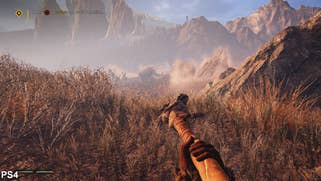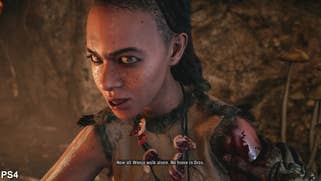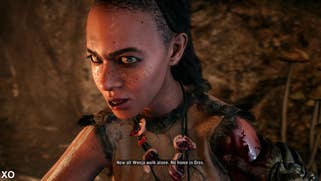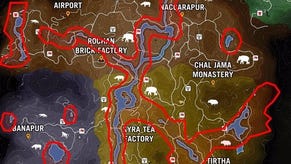Performance Analysis: Far Cry Primal
Rock solid.
The good news is that from a technical perspective, Far Cry Primal retains everything that impressed us so much about its predecessor: expansive environments, beautifully long draw distances, a solid lighting model and a rock-solid level of performance. The bad news is that in terms of both graphics and gameplay, perhaps not quite enough has changed - any enhancements are a subtle evolution, as opposed to the visual overhaul you'd expect from a second generation title for the latest wave of consoles.
That said, there's still much to enjoy here. The post-processing pipeline sees greater use of volumetric lighting and effects, while performance is actually even more stable than Far Cry 4 - in itself, an impressive achievement. However, the overriding feeling is one of commonality - there's the same full 1080p framebuffer on PS4, along with a sub-native presentation on its Xbox One equivalent. Owing to the advanced AA in use (plus the lack of hard edges for analysis), getting a precise lock on resolution here is difficult - but the smart money is on the same 1440x1080 set-up seen in Far Cry 4.
Once again, the overall presentation is extremely clean - and it looks as though the same HRAA technology used in its predecessor is in effect here. This combines a smart post-process anti-aliasing technique with temporal super-sampling (effectively using data from previous frames to smooth off the current one). Again, there are minor differences here between Xbox One and PS4 - the Sony platform could well be using the same four-frame temporal sample as Far Cry 4, and again, we wouldn't be surprised to see a two-frame equivalent on Xbox One in line with the last game.
Resolution and anti-aliasing aside, there's really not much to tell the two versions apart. Effects work is equally accomplished across both platforms, with massive prehistoric valleys and forests brought to life with liberal use of volumetric lighting, particles and post-processing elements such as depth of field and object blur, which enhance combat and cut-scenes in particular.
Animation is also improved on characters and animals compared to Far Cry 4. Faces appear more expressive during cut-scenes, while the game's wildlife moves across the environments more fluidly. But beyond the spectacle provided by the Dunia engine, initial impressions suggest that we're looking at a very similar looking game to Far Cry 4 in most areas, albeit with additional refinements that add to the overall sense of polish.
Similarly, performance also sees a welcome, if somewhat subtle boost - frame-rate drops and tearing seen in Far Cry 4's more demanding areas (particularly on Xbox One) now seem to be a thing of the past, with Primal offering up a smoother experience throughout. Aside from the occasional dropped or torn frame, performance remains locked at 30fps, with consistent controls and relatively smooth motion. Fast-paced scenes and shaky camera movement sometimes create visible judder, which mildly distracts during fierce hand-to-hand combat - but frame-rates remain locked at 30fps here regardless.










Xbox One benefits a little more from the extra stability as running through dense forests no longer impacts upon performance as it did in Far Cry 4, but ultimately, the game's mixture of hunting, exploring, and combat is handled smoothly on both platforms, and it certainly seems that Ubisoft has managed to further optimise the Dunia engine since Far Cry 4.
On the whole Far Cry Primal is a solid release on both machines. PS4 and Xbox One deliver highly playable experiences with very little in the way of technical shortcomings that distract from the familiar action on offer. If you've spent time with Far Cry 4, you'll pretty much know what to expect here, and while the scope of the gameplay may lack surprises, the execution can't really be faulted. The increased resolution and overall cleaner presentation make PS4 the best choice, but we have no qualms in recommending the Xbox One game either, where the graphical differences are only mildly visible during play.
Of course, running at 60fps isn't possible here - but that's one area where the PC version can take point and potentially offer up a substantially smoother gameplay experience. On top of that, it may well be the case that additional visual effects and asset improvements could be added - just as they were in Far Cry 4. We'll report back on that next week once our full triple-format Face-Off is complete.









